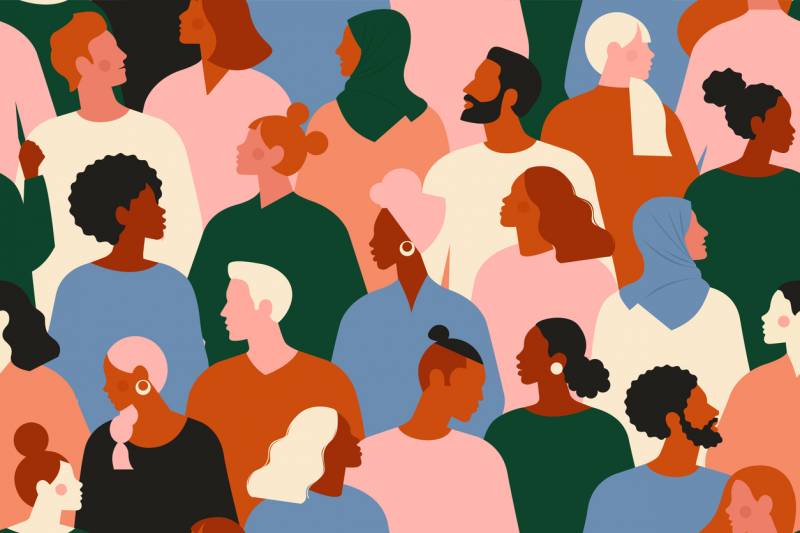All across the country, arts organizations large and small are wrestling with their complicity in institutional racism.
Employees, artists and patrons have taken to social media to call out discrimination at museums from the Metropolitan Museum of Art in New York to SFMOMA, the latter of which recently saw the departure of a top curator and deputy director in the wake of accusations of racism and censorship. Similar reckonings have taken place in the realms of theater, food, media and virtually every facet of public life.
As these organizations attempt to unravel a culture that diminishes people of color and their contributions, they’re also under tremendous financial pressure. Layoffs and furloughs have been common at large museums and small concert venues alike. In California, over 230,000 arts and entertainment workers have filed for unemployment.
Painful as these times are, they also offer an opportunity to imagine how arts organizations, as stewards of culture, can rebuild with a vision of equity and community service. To that end, a group of artists, scholars and activists teamed up to craft The Cultural New Deal, which functions as a manifesto, a list of demands and a roadmap for arts institutions to address racism and inequality from within—not just pay lip service to those ideas. To the authors, that means going beyond simply featuring more work by artists of color. It means prioritizing the leadership of Black and Indigenous people, paying them and funding organizations made for and by people of color.
The collaborators on the Cultural New Deal include Michele Kumi Baer, Jeff Chang, María López De León, Tara Dorabji, Kassandra Khalil, Lori Pourier, Favianna Rodriguez, Nayantara Sen, Carlton Turner, Roberta Uno and Elizabeth Webb, and they represent the organizations Center for Cultural Power, ArtChangeUS, First Peoples Fund, the National Association of Latino Arts and Culture, Race Forward and Sipp Culture.
We spoke with one of the authors, scholar and writer Jeff Chang, about how arts institutions can emerge from this moment of crisis.
Editor’s note: This interview has been edited for length and clarity.
The Cultural New Deal feels really timely. We’re seeing a lot of cultural institutions posting things to publicly align themselves with social justice, but they’re not always adhering to those values internally. Can you talk about the impetus behind the project?
I think when we began quarantine, a number of us got together, folks who are working at the intersection of arts and cultural justice, to start having discussions about what’s been happening in the arts sector and the cultural sector. This is before a lot of museums or different places started posting—before May 25 [when George Floyd was killed by a police officer], in other words. One of the things that we were reflecting on is that it’s literally centuries of racism, of racial injustice, that have gotten us to this point.
At that particular point, we were seeing the coronavirus, which still is devastating our communities, and trying to think at the same time about what it meant in the arts sector. [Hundreds of thousands of people] had lost their jobs and everybody was losing money. Layoffs were happening at large institutions, and small institutions were closing. And so we were thinking about this and trying to figure out, what can we ask for? What can we offer, in terms of thinking about what a recovery would look like? And then, of course, May 25 happened and it drew us into deeper conversations about the centrality of what we do and what that means to communities of color.
The Cultural New Deal starts off with a statement about the fact that we’re in a moment of a pandemic where racial justice movements are at a height, where we’re experiencing an economic crisis, an environmental crisis. And what we’re asserting is that artists and culture bearers are central to the healing of our communities and the healing of society. The Cultural New Deal really is a call for us to sustain folks who maintain our imagination, who bear culture and who hold the key to being able to to bring our communities together in this particular moment to survive and be resilient in the face of all these crises.

The Cultural New Deal goes beyond individual artists. It’s geared towards the people who program and fund the arts. Why is that?
What we’ve seen in arts and culture is that our leadership has ignored questions of racial inequities and cultural inequities for so long that we keep coming back around to these questions of underrepresentation. [That’s] both in terms of the works that we’re seeing—whether it be theater or art pieces or dance or music or that kind of stuff—but also underrepresentation in terms of people of color, particularly women of color, queer people of color, disabled people of color in decision-making positions in the arts and culture sector.
And so that’s why we are calling on folks to be able to look at representation, to lift up leadership of Black, Indigenous and people of color, to be able to invest in these ecosystems that are so central to our community health, and to be able to look at how we can reverse these long-term inequities in funding, hiring and resourcing. And then also for folks to be accountable to this work with integrity, and to be in it for the long run, not just because of the moment.


